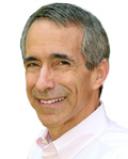
Hormones
The Simple, One-Word Secret for Adding Years to Your Life
Convincing data makes the case for taking action now.
Posted May 28, 2015

While billionaires are funding immortality research they hope will allow themselves (and perhaps the rest of us) longer life, other more practical means are available. The most powerful one identified so far is startlingly simple: Move. Then keep moving.
What’s the Latest?
We have comprehensive data from the Oslo study, which attempted to enroll 25,000 Norwegian men aged 40-49 in 1972-73, and kept following as many as possible, through the present. Measures of physical activity were tracked for 40 years, with gradations up from couch potato to multiple hours a week of intense physical sports.
Only 63 percent of those originally invited enrolled. Those who refused died at a far quicker pace than those who agreed. This is a good example of volunteer bias: The individuals interested enough in their health to enroll in a research study—and willing to put up with it—began as, and remained, a much healthier group for decades longer than those who did not. That’s something to consider when you glance through today’s Internet-based surveys.
What really happened to all these Norwegians? The more they moved, the longer they lived. In a 12-year follow up of the group, from 2000 through 2012, those who did light (walking) or heavier (running, sports) activities for a half hour, six days a week, saw mortality rates decline 40 percent. In these then-elderly males, this worked out to five more years of life. In other words, the greater the amount and intensity of activity, the lower the risk of death.
Is This Study Consistent With Others?
Thoroughly. The authors recognized that previous studies showed reductions in mortality via physical activity of 30-to-60 percent. In the studies of Wen et al. done in Taiwan, 15 minutes of activity a day decreased mortality by 14 percent, with a further 4 percent decrease for every added 15 minutes. The Oslo authors feel that data is an underestimate, as so many co-variables in the model used by Wen et al. (like systolic blood pressure and diabetes) would act as confounders of the exercise effect.
In the Kungsholmen data in Sweden, with results for both men and women, lifestyle factors added six-to-seven years at age 65, and 4 years at age 85. Physical activity was a big part of that increase.
Why Should Physical Activity Have Such a Big Effect?
There are many theories. First, let’s consider the Standard Model:
- People who move around more have lower blood pressure.
- If you move more, you make your arteries more elastic and less prone to plaque.
- Greater physical activity makes you stronger, allowing you to avoid accidents, falls and physical debilities.
Next there's the Regeneration Health Model:
- The body is an information system. Physical activity provides a much greater load of information to the body than virtually anything done sitting still. If you walk outside, your immune system must respond to thousands of different—and mutating—bacteria, viruses, fungi and other organisms. It must counter many different chemicals and pollutants. Updating on the fly makes the system more resilient, and effectively smarter.
- Moving in three-dimensional space is itself a tremendous stimulus to the body and brain, which must coordinate cognitive, sensory, muscle, connective, and skin tissue activity in real time. Just consider what your eyes and ears have to do in conjunction with immunity to keep your body aware—and alive. The biological rule is simple: Learn continuously, or die. The end result is growing more brain cells in memory regions, plus making the brain and body more resilient.
- Physical activity improves mood, which allows people to remain engaged physically and mentally, and makes it easier and more reinforcing to stay active in all spheres.
- Physical activity causes the heart and blood vessels to be stressed, causing more and sometimes quicker regeneration of tissue. Most of the heart, for example, is replaced in three days time, and more of it will be replaced from the greater use and material demands of physical activity. Many organs are more efficiently regenerated in activity than when left in a resting state. As a counter-example, sitting is increasingly recognized as an important risk factor to overall mortality.
- Moving improves the ability to sleep and rest, increasing regenerative capacity overall. Walk in the morning, sleep better at night.
- Moving causes frequent and ubiquitous hormonal shifts, including increased insulin sensitivity. The latter may help with greater energy efficiency throughout the body, as well as prevent build up of fat surrounding abdominal organs, now recognized as a hormonal gland in and of itself.
- Increased physical activity leads to more engagement with the environment. That improves learning and can augment the ability to connect with others along the way. Notably, heart attack risk goes down 30-50 percent in British housing estates where people have greater access to green space—letting them move around and meet each other.
Bottom Line
Lifestyle changes may add 10 years or more to the average lifespan of young adults who adopt them. Even among the elderly, lifestyle can add multiple years—even when people are already in their eighties. Physical activity appears to play a large role in increasing lifespan. The more of it the better, up to very high levels.
And you don’t have to be a billionaire to do it.

